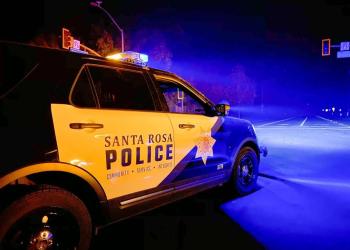
California Court Clarifies Rules on Prolonged and Pretextual Traffic Stops
The duration of a traffic stop is measured from the time the stop is made until the subject is either released or a reasonable suspicion of other criminal activity is developed, justifying a continued detention, whichever occurs first. That point in time when a violation is first observed is irrelevant when measuring the duration of a traffic stop. California Vehicle Code § 2806.5 does not make illegal a pretextual traffic stop, but rather only requires that an officer inform the detainee of the reasons for the stop and document the same in later reports.
On March 31, 2023, at approximately 10:00 p.m., Santa Rosa Police Officer Brett Wright and his partner, Officer Dane Schindler, observed defendant Adrian Osvaldo Valle pumping gas into his vehicle at a local gas station. Officer Wright (being a member of Santa Rosa Police Department’s Special Enforcement Team) recognized defendant as an active gang member, and knew that the gang he belonged to (a subset of the Sureño gang) was currently feuding at the time with another subset of that same gang. He also noticed that defendant was missing the front license plate on his car; a violation of Veh. Code § 5200(a).
Knowing that they were in an area known for its gang activity, Officer Wright suspected that defendant might be carrying a firearm. So the officer decided that as soon as defendant left the gas station, he would make a traffic stop for the V.C. § 5200(a) violation. While waiting, Officer Schindler called for a K-9 unit with a gun-sniffing dog. The plan was to stop defendant for the Vehicle Code violation and while writing him a citation, have the dog do an “open-air sniff” of his vehicle.
In accordance with this plan, Officer Wright and Officer Schindler followed defendant out of the gas station and made a traffic stop in a parking lot less than a quarter mile away. The time of the stop was 10:03 p.m. Upon stopping defendant, Officer Wright informed him why he was being stopped. Obtaining defendant’s driver’s license and registration, the officer returned to his patrol car where he ran a license check. It was quickly determined that his license was valid but that he did indeed have prior arrests for drugs and firearms, with at least one felony conviction. Officer Wright then began writing the citation. While this was happening, K-9 Officer Aaron Gonzales-Campos arrived on scene with his gun-sniffing dog "Ghost". The time was 10:06 p.m. As Officer Wright continued working on the citation, K-9 Officer Gonzales-Campos began running his dog around defendant’s vehicle. Within a minute and a half, K-9 "Ghost" alerted to the driver’s side door. The time was 10:10 p.m. At this time, Officer Wright stopped writing the citation and began an investigation into the possible presence of a firearm in defendant’s car. Upon searching the car, a loaded handgun that appeared to be functional was in fact found in the center console. Defendant was arrested.
Charged in state court with various firearms-related offenses (including being a felon in possession of a firearm), defendant filed a motion at his preliminary hearing to suppress the firearm. The prelim magistrate granted defendant’s motion, ruling that the traffic stop was (1) unlawfully prolonged and (2) in violation of recently enacted Veh. Code section 2806.5. The People appealed.





